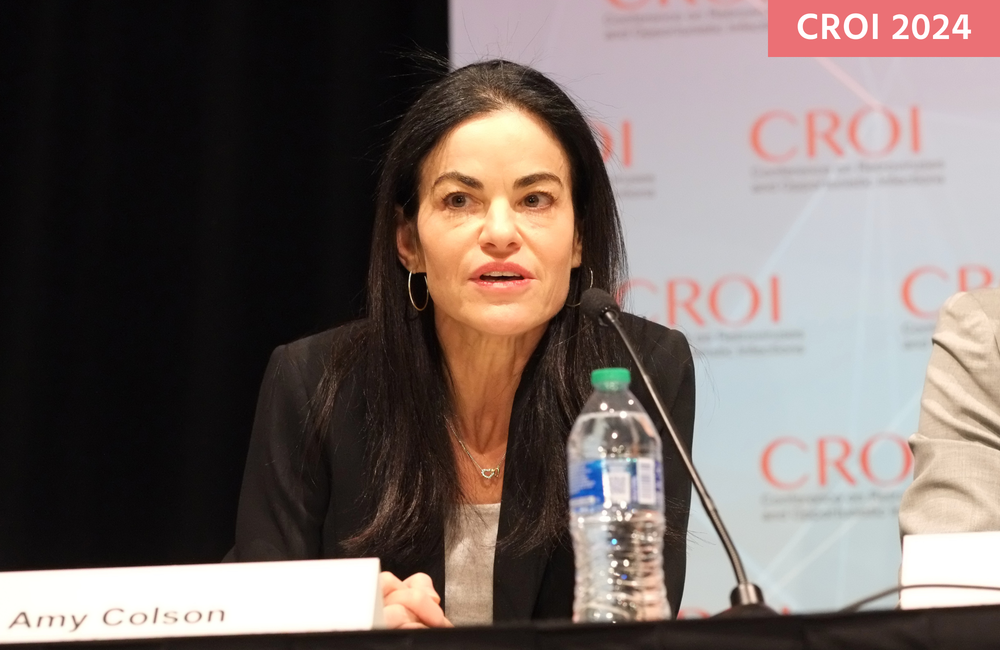
A once-weekly oral regimen can keep HIV suppressed as well as daily pills, according to study results presented today at the Conference on Retroviruses and Opportunistic Infections (CROI 2024).
In a phase II clinical trial, 94% of people who switched to weekly islatravir and lenacapavir pills maintained an undetectable viral load, matching the viral suppression rate of those who stayed on daily Biktarvy (bictegravir/tenofovir alafenamide/emtricitabine). If further data continue to show promise, the combination could become the longest-acting regimen that does not involve injections.
“Oral regimens have transformed HIV care, but taking a pill every day is difficult,” Dr Amy Colson of Community Resource Initiative in Boston said at a media briefing. “Longer-acting options relieve the burden of daily pill-taking and have the potential to improve adherence, improve virologic control and reduce new infections.”
Lenacapavir, from Gilead Sciences, is the first HIV capsid inhibitor. Because it works differently, it remains active against virus that has developed resistance to other classes of antiretrovirals. A twice-yearly injectable formulation (Sunlenca) was approved in 2022 for treatment-experienced people with multidrug-resistant HIV. Gilead also makes a 300mg lenacapavir pill that is taken as an initial loading dose and can be used for temporary ‘bridging’ if an injection must be missed.
Islatravir (also known as EFdAor MK-8591) is a first-in-class nucleoside reverse transcriptase translocation inhibitor from Merck. It has a long half-life in the body, making it a candidate for long-acting HIV treatment and prevention. Combined with the NNRTI doravirine (Pifeltro), islatravir demonstrated good activity in previously untreated people and maintained viral suppression in those who switched from another oral regimen.
Because doravirine is not suitable for long-acting therapy, Merck also paired islatravir with MK-8507, an experimental NNRTI, in a once-weekly regimen. In addition, Merck and Gilead started a study of once-weekly islatravir plus lenacapavir in 2021. But later that year, the US Food and Drug Administration (FDA) placed a clinical hold on islatravir after HIV-positive participants in treatment trials experienced a decline in CD4 T-cell counts and HIV-negative volunteers in pre-exposure prophylaxis (PrEP) studies saw a drop in total lymphocyte counts.
Merck was not ready to give up on islatravir, however. Company scientists conducted an extensive analysis to better understand the problem, determining that the doses used in these trials were too high. People who took lower doses had CD4 cell and total lymphocyte numbers comparable to those of people on standard therapy or a placebo. The FDA lifted the hold, and Merck launched a new set of studies testing a lower daily dose of islatravir in combination with doravirine and restarted the trial with Gilead using a lower weekly dose of islatravir with lenacapavir.
Now, the first results from that trial are finally here.
This open-label phase II study (NCT05052996) enrolled 104 adults with viral suppression (less than 50 copies) on daily Biktarvy, no history of virological failure, a CD4 count of at least 350 and a total lymphocyte count of at least 900. People with hepatitis B were excluded, as neither drug has activity against hepatitis B virus. The median age was 40 years, and 18% were women. The study population was diverse: 50% White, 36% Black, 29% Latino and 7% Asian, Native American or Pacific Islander.
The study participants were randomly assigned to either stay on Biktarvy once daily or switch to 2mg islatravir plus 300mg lenacapavir pills once weekly.
At 24 weeks, islatravir plus lenacapavir was “both efficacious and well-tolerated,” and most participants in both groups maintained viral suppression, Colson told reporters.
Only one person (1.9%) in the islatravir plus lenacapavir group had a viral load above 50 copies at 24 weeks, and he later achieved viral suppression at 30 weeks. No one in the Biktarvy group had a detectable viral load at 24 weeks. Both groups had the same rate of viral suppression (94.2%) after accounting for five people with missing data. Follow-up will continue through 48 weeks.
Both treatment regimens were safe and well tolerated. Careful monitoring of CD4 cells and total lymphocytes revealed no clinically significant decreases and no differences between the two groups. Treatment-related adverse events were more common in the islatravir plus lenacapavir group (17.3% vs 5.8%), but all were mild to moderate. The most common side effects in this group were dry mouth and nausea. Two people discontinued the drugs due to adverse events unrelated to treatment. Colson noted that the study team wants to see 48-week safety data before deciding how to move forward.
Based on these findings, islatravir plus lenacapavir “has the potential to become the first weekly oral complete regimen for the treatment of HIV,” Colson concluded.
Colson A et al. Efficacy and safety of weekly islatravir plus lenacapavir in PWH at 24 weeks: A phase II study. Conference on Retroviruses and Opportunistic Infections, Denver, abstract 208, 2024.
